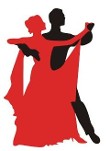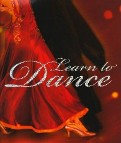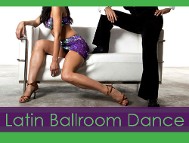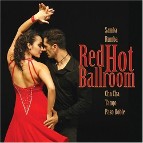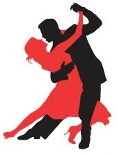|
|
In today's world, there are more health problems than ever before - like obesity, hypertension, muscle and joint pain, and back pain. The very basic reason for this is lack of activity. In the modern age of internet and fast food, people just aren't getting enough exercise. Most popular excuses people give for exercise is that it simply isn't very fun. The work around, well - Dancing!
What are the benefits of Dancing?
If you're looking for a great way to keep fit and are tired with going to the gym or running, then try getting some dancing exercise. Dancing is not only fun and a great way to socialize, mix, and mingle, but it's also a good way to stay physically fit. The health benefits of dancing are numerous. Some of them can be listed below:
Physical Benefits
- Dancing is constant movement, and it covers everything from cardio and strength training to balance and control.
- Dancing aids in weight loss and it is a great way for people of all ages to get and stay in shape.
- Being an aerobic exercise, it benefits your heart, cardiovascular system and increases your lung capacity. It also tones and tightens the major muscle groups of the body.
- It helps you burn those calories away, while improving your stamina. Dancing for 30 minutes can burn anywhere from 150 to 200 calories (or more, depending on the tempo).
- Regular dancing can lead to a lower blood pressure and an improved cholesterol profile.
- Most forms of dance require dancers to perform moves that require bending and stretching, thus increasing their flexibility.
- The constant and low impact movements of dancing allow your joints and bones to strengthen, reducing the risk of sprains, breaks and arthritis later in life. This also help in the prevention or slow loss of bone mass associated with osteoporosis.
- The side-to-side movements of many dances strengthen your weight-bearing bones like tibia, fibula and femur.
- Dancing may be helpful to avoid having a slipped disk later for people who work at a desk all day humped at a computer. It keeps their bodies mobile and their joints moving.
Personal and Social Benefits
- Dancing helps you to relax, reducing stress and tension.
- It boosts self confidence.
- Dance elevates your mood by raising your endorphin levels and thus increases the sense of well-being.
- Dancing is a great way to meet new people and make new friends.
What type of Dancing?
There are various types of dancing that you can choose from like:
-
Zumba: It is a dance workout that revolves around traditional rhythms from Latin dance. It is a mix of Latin dances like salsa, cumbia, and merengue, mixed with some hip-hop and swing moves. Zumba incorporates the principles of interval training by using alternating fast and slow sequences to vary the intensity. It provides a total body toning routine along with a heart pumping aerobic workout. An hour spent in a Zumba class can burn anywhere from 500 to 800 calories.
-
Hip-Hop: It is a perfect dance that requires less of training and incorporates lots of fun. It is a freestyle type of dancing - the moves can be done in any combination to the music. Hip-hop uses the entire body making it great for overall exercise. Balance is important when you do these moves so the abs get a lot of workout. It builds endurance and stamina.
-
Salsa: This fast dance style is known for being both sultry and playful. Salsa dance moves involve moving from side to side, synchronized strategically with the side stepping of each dancer. Salsa is a good exercise because of its fast tempo and can burn 200 to 400 calories in a half-hour session. It also improves posture, and increase endurance and stamina.
-
Bhangra Dancing: This Indian dance takes the body through a series of slimming routines. The high-energy dance can burn around 300 to 350 calories an hour and can tone main muscle groups like quads, biceps, triceps, glutes and abs. It also lowers blood pressure and improves cholesterol levels.
-
Belly Dancing: The movements of belly dance put the joints and the ligaments of the back and the hip in gentle but repetitive movements. This helps in increasing the flow of synovial fluid (nature's lubricant) in these joints. This fluid helps in alleviating the back and joint pains. Belly dancing uses muscles in the abdomen, trunk, pelvis, spine, and neck, thus helping in toning muscles and maintaining the flexibility. Belly dancing also tones the muscles used in childbirth. Belly dance can help in clearing up the congestion in the pelvic area and thus helps in decreasing the pre menstrual syndrome (PMS).
-
Ballroom Dancing: With quick moves, spins, throws, and dips, the ballroom dancing of today is hotter than ever. Ballroom dancing trains you on proper mind and body coordination. Ballroom dancing involves activities (such as learning and memorizing complicated steps, concentrating on the rhythm of music, and working with your partner) which strengthen and exercise your brain. A recent published study found that ballroom dancing at least twice a week made people less likely to develop dementia. In addition, ballroom dancing can improve balance, flexibility, posture, and endurance. Depending on the type of ballroom dance you do, you can burn up to 250 to 400 calories in one hour.
Tips to start Dancing
Here are some tips to incorporate dancing in your daily life:
- Select the dance that you would like to perform.
- Join dancing classes or view some training videos on the internet.
- Give yourself some time to warm up before you start.
- Look at your partner's face, make some eye contact & smile occasionally.
- Keep your steps small so that you feel in control of what you are doing.
- Don't worry if you can't master the dancing techniques.
- Remember to have a blast!
Dance slow, dance quick, dance solo, dance with others - there are no rules. Dancing is very helpful, try it out for some time and you will see result for yourself.
So shall we dance :)
Read more: http://www.lifemojo.com/lifestyle/dancing-as-exercise-8404432#ixzz1jAS4e2GZ
|
|
